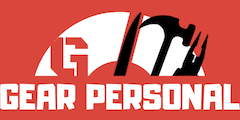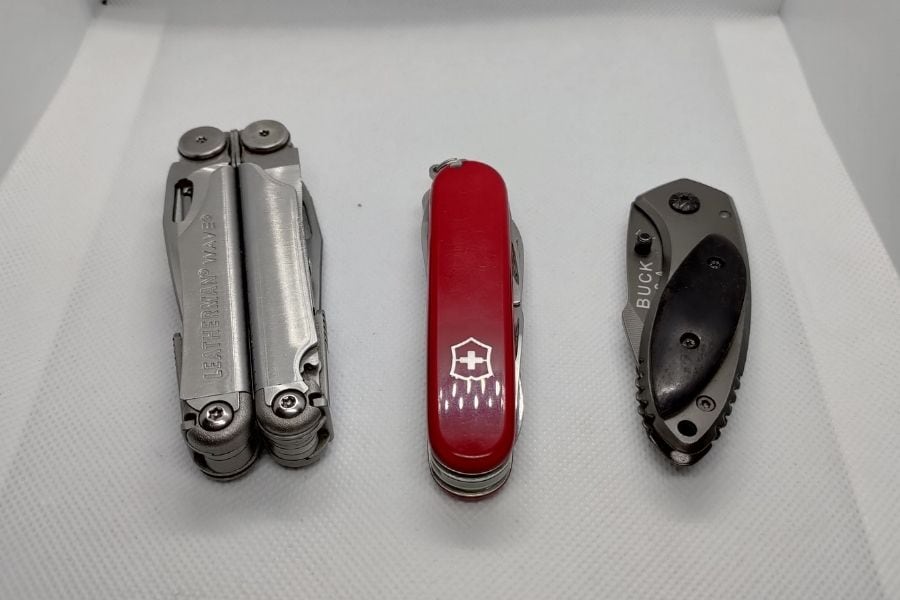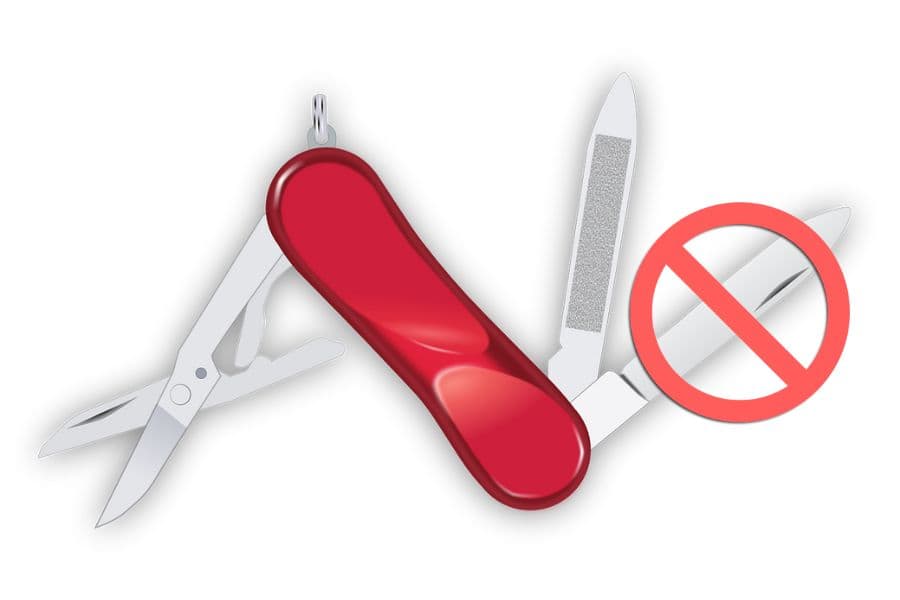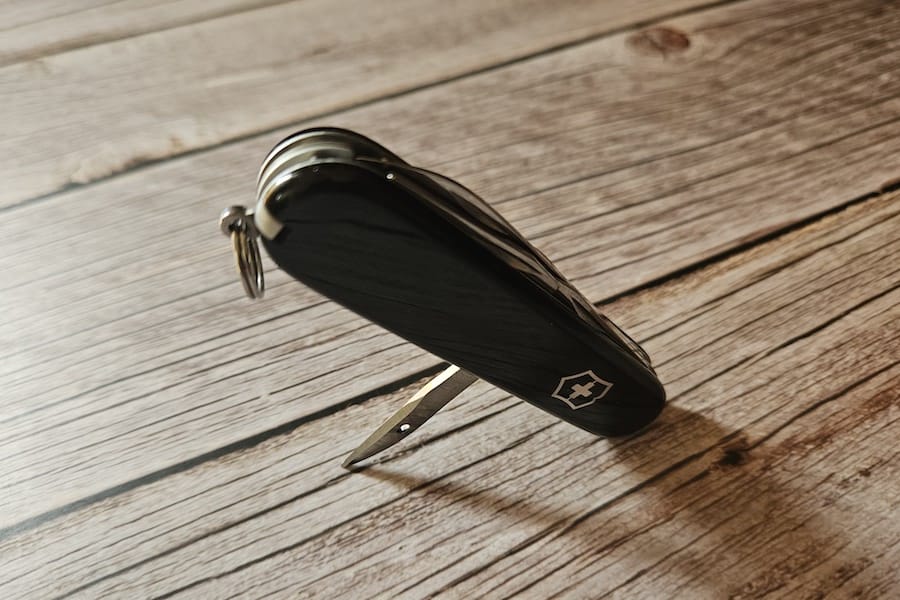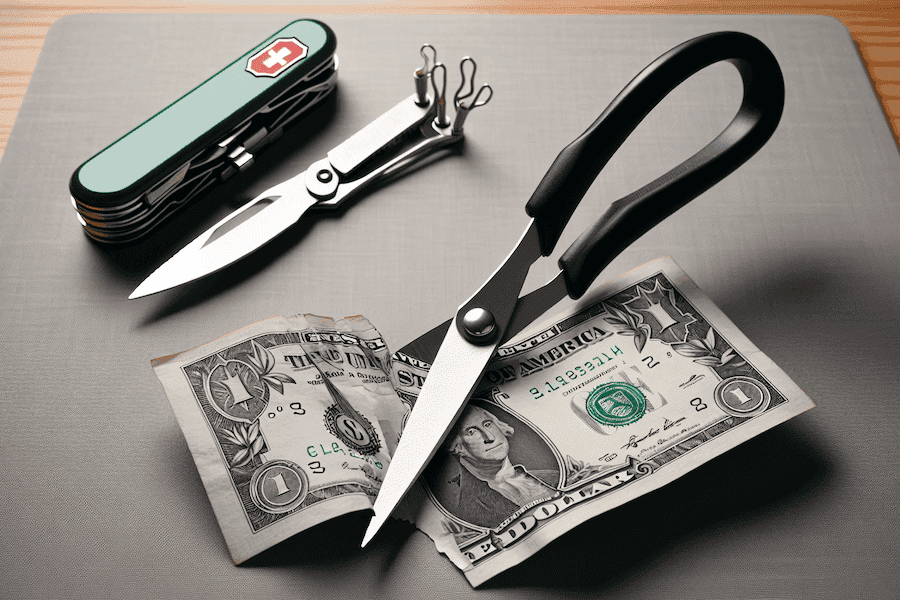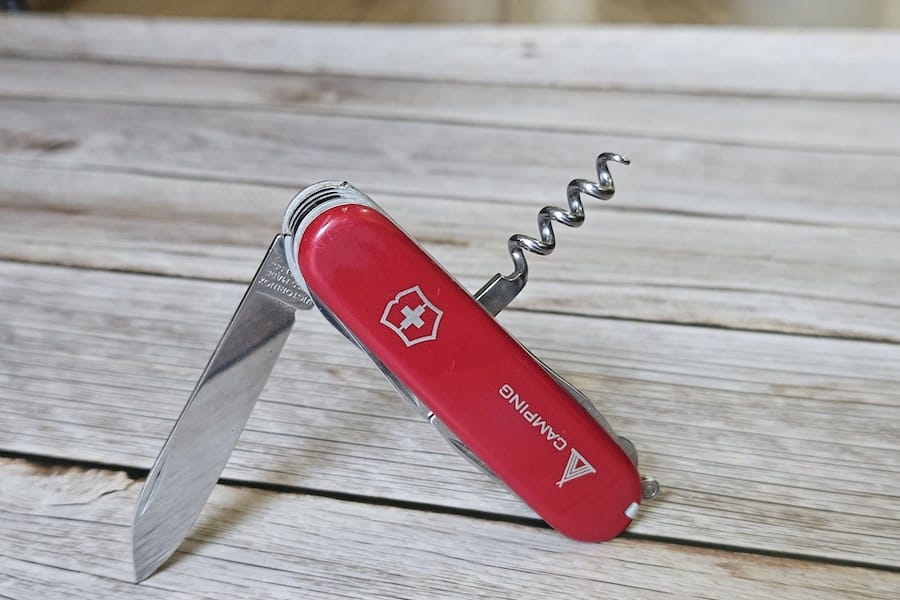Planning to get your first pocket knife and wondering whether you should get a multi-tool instead? Well, you are not alone. Carrying a pocket knife is a sign of your maturity, responsibility, as well as capability. It is such a useful thing to have always with you, not only during outdoor activities like camping or hiking but also in your day to day life. But is it not better to get a multi-tool instead, especially when they can do everything that a pocket knife can, and much more?
A multi-tool or a Swiss Army Knife is better than a pocket knife in most of the situations where you may need a tool to get something done, especially if it has a decent blade comparable to a pocket knife of the same size. However, there are some specific situations where you may prefer a pocket knife, especially when the quality of the blade, the built quality of the tool, and the weight is important to you.
So when should we prefer a multi-tool over a pocket knife?
It appears that the answer is not so simple as it depends on a lot of factors related to what you actually want to do with it.
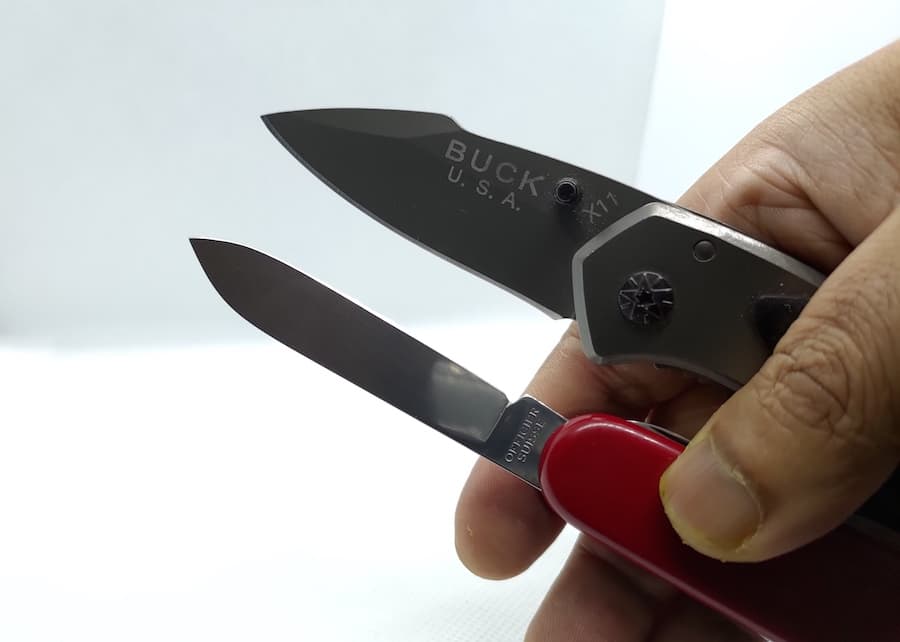
Let us go through every factor that may have a significant impact on your decision for choosing one over the other.
1. Deployment and Ease Of Use
How quickly do you want to take out your tool and put it into action?
Most pocket knives are designed for ease of use. It is very easy to take a pocket knife out of your pocket and flick it open. And in most cases, you can do it with one hand. This is just not the case with a multi-tool where you have to use both your hands to get any of the tools out, including the knife.
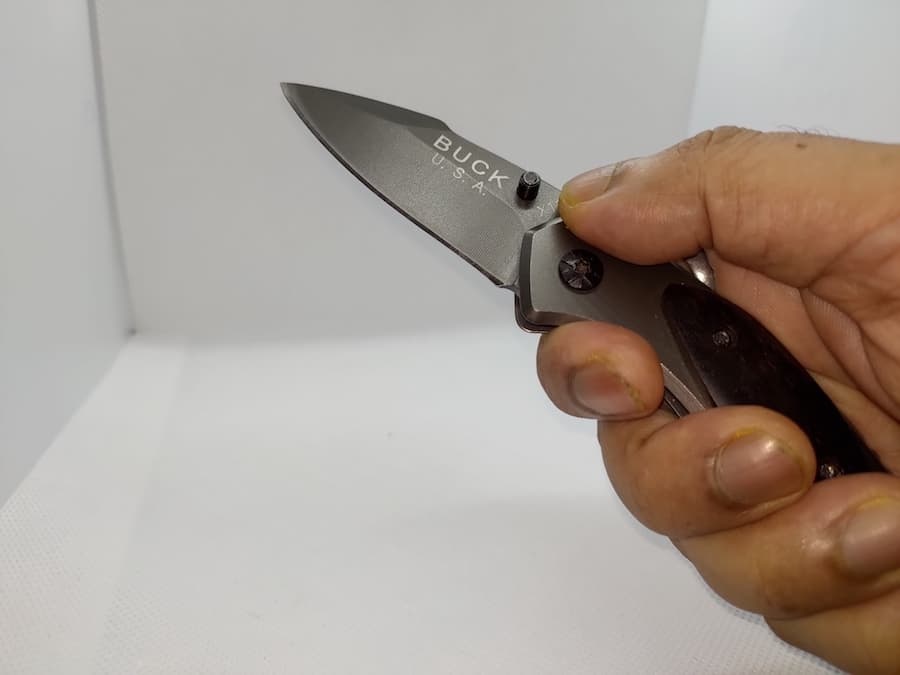
Some multi-tools do have one-handed opening knives which can be flicked open just like a pocket knife. They do work, but not as smoothly and seamlessly as a pocket knife. Part of this is because of the design and ergonomics of the tool. Multi-tools do not have ergonomic handles, the kind you get in pocket knives. The body of the multi-tool is used as the handle to grip on to when using it as a knife. The feeling is not just the same as holding a pocket knife.
You will particularly notice this when using the knife for extended periods of time. For light cutting duties, multi-tool will do just fine. But for extended use, you will notice the weight and non-ergonomic grip on the tool slowing and tiring you down. It almost feels as if some extra effort is needed to do the same task with a multi-tool compared to a pocket knife.
A pocket knife feels much more natural in your hands compared to a bulky multi-tool and is much quicker and easier to deploy and work with. I always realize this when I carry both together. For everyday chores where I need to cut something or open a package, I always find myself going for the pocket knife.
2. Quality of the Blade
A good blade is always a very useful tool!
The blade of a pocket knife is better than that of a multi-tool in almost all cases, especially if you compare a pocket knife with a multi-tool of similar size. The pocket knife blade will be thicker, stronger and longer than its multi-tool counterpart.
This is understandable since a multi-tool has to fit in a lot of tools in a compact form-factor.
As such, having the best knife is not the priority.
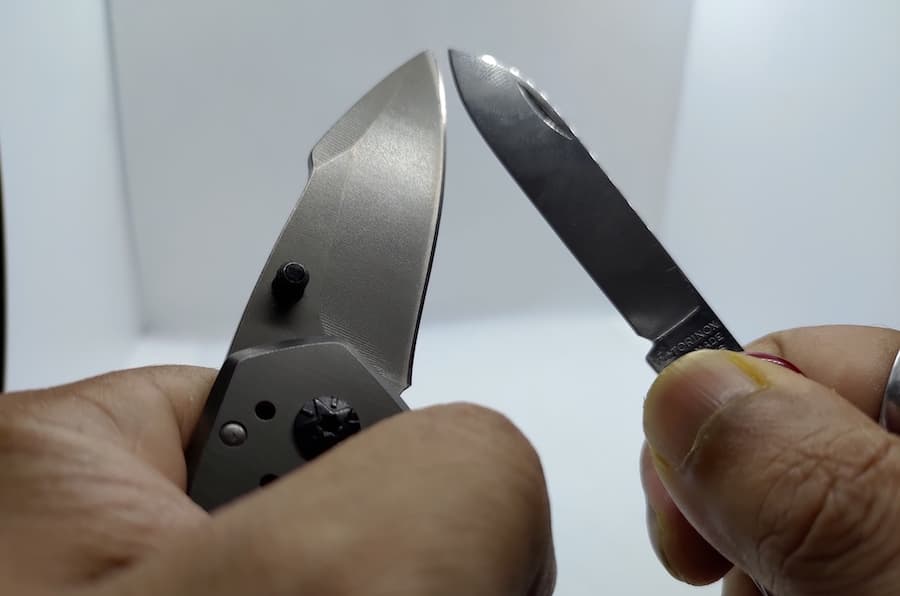
A thicker stronger knife blade will take so much space that the multi-tool itself will have to be much thicker to accommodate it.
As such, in almost all cases, you will find that though the multi-tool blade is very capable, it is usually very thin and light. It is usable of course, but not as much as a dedicated pocket knife.
You will especially realise this when doing some heavy-duty tasks with your knife, like carving wood.
A thicker, heavier and longer knife is so much more useful and comfortable to use in those situations.
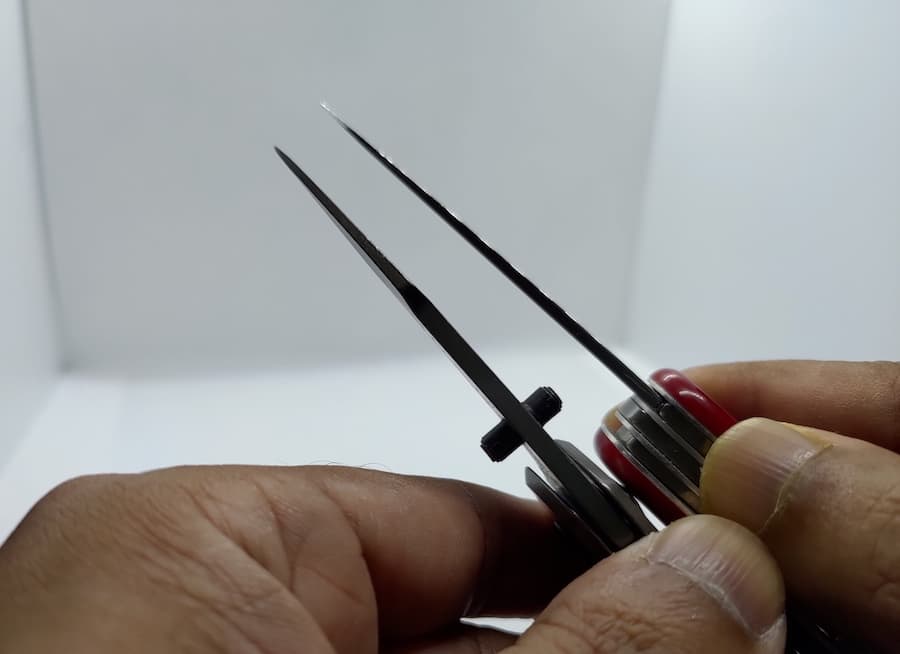
Even the quality of the steel used in pocket knives is usually better than that of a multi-tool. This is, of course, debatable, as nowadays the situation has improved a lot and multi-tools are coming out with much better steel, comparable to proper knife steel.
3. Locking Blades
Locking blades are better than non-locking ones!
If you use your knife a lot, then you already know how important a locking blade is. Almost all pocket knives come with some sort of locking mechanism. It is a safety feature that is difficult to ignore. However, most small and medium-sized multi-tool usually do not have a locking mechanism for the blade. This is especially the case in most SAKs (Swiss Army Knife).
Some multi-tools do have locking blades of course, but in most cases, these are bigger, heavier models, not suitable for pocket carry. Smaller multi-tools usually skip this feature to keep the multi-tool compact and light for easier carry.
Some may say that if you are careful while using the knife, you don’t really need a locking blade.
But a locking blade gives you that extra peace of mind which makes using the knife a much better experience.
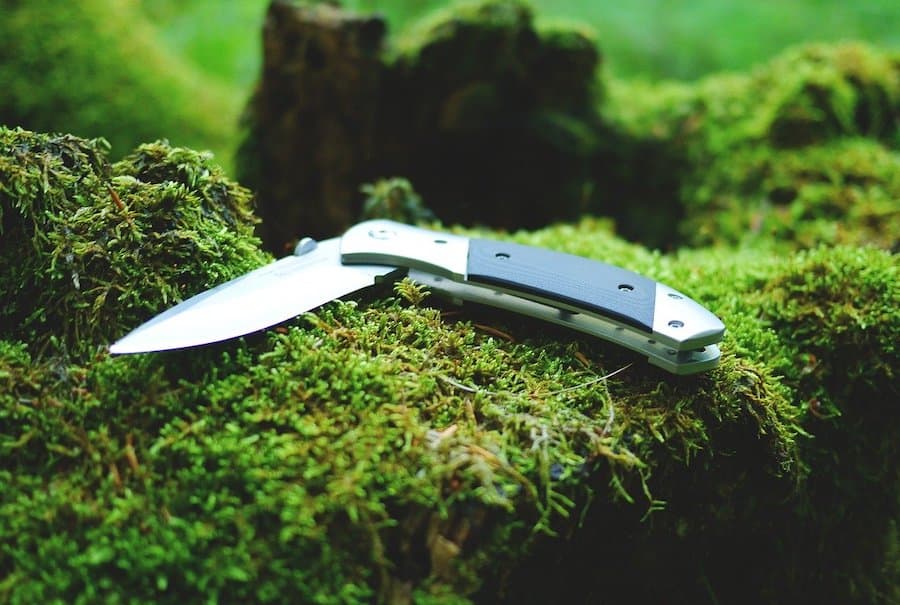
When exerting extra pressure on the knife, you are much less concerned about the knife closing on your fingers and causing injury.
You will prevent a lot of bruises and cuts in the long run by opting for a knife that has a locking feature. This is especially important for people who are not careful enough while using a knife.
4. Usage Pattern
Your usage pattern determines what you need!
This is perhaps the most important factor while choosing between a pocket knife and a multi-tool. If your usage pattern mostly includes cutting, slicing, or carving with a blade, then a pocket knife will serve you much better than a multi-tool.
These functions are enough for a lot of practical purposes where you need to cut thick ropes or cloth, carve wood, build fire in the outdoors, hunting, fishing, and a lot of other bush-crafting activities. A pocket knife is much more suitable than a multi-tool in these situations. Of course in all outdoor activities, having a bigger knife is much more desirable than a small pocket knife.
But that is all about it. A pocket knife can cut, and that is its one and only function. What if you need something extra out of your tool? What if you are faced with an unexpected situation when you need to do something that just cannot be done with a sharp blade?
A multi-tool is just made for such an occasion. When you do not know what to expect, you better prepare yourself with something more than a knife.
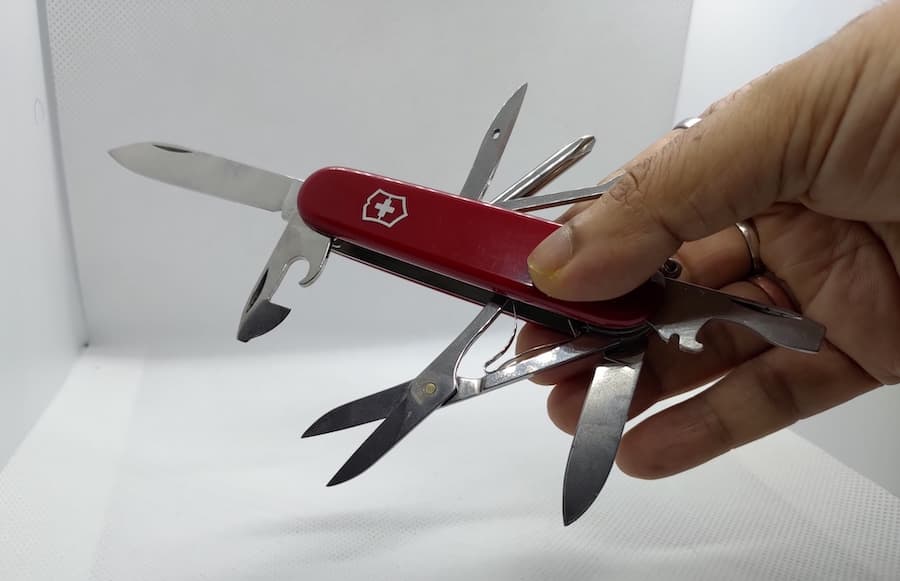
In addition to a blade, most well-designed multi-tools come with a bottle opener, can opener, flat-head and Philips-head screwdrivers, scissors, tweezers, and even pliers and wire cutters. Besides these, there are all sorts of other tools also that you can get in a multi-tool. Of course, you may not get each and every tool you desire in every multi-tool, but there are so many options available in the market that you can always find the one with just the tools you need.
And this is exactly why you may prefer a multi-tool over a pocket knife to always carry with you. A pocket knife is so much limited in its application when compared to a multi-tool. You can maybe replace a pocket knife with a multi-tool, but the opposite is nearly impossible. A pocket knife can never be used to tighten or loosen screws, or used like a plier. It is not built for that purpose.
5. Size and Weight
The size and weight impact how you carry your tool, or whether you carry it at all!
Pocket knives are always lighter and slimmer than multi-tools and can be carried along much easily. Of course, there are lighter and thinner multi-tools too, but they sacrifice so much in terms of usability that you may as well ignore them. In short, you will feel much more comfortable carrying a knife in your pocket than a multi-tool.
Most multi-tools are thick and do not stay flat in the pocket, especially the bigger ones. The weight and thickness will definitely affect your movement. If you are really interested in having your multi-tool always with you, you may feel better carrying it in a separate sheath attached to your belt.
If a separate sheath feels like an extra thing to carry with you, you may go for multi-tools that come with a pocket clip attached to them. Carrying a multi-tool clipped to your pocket is better than carrying it without one, dangling and flipping deep inside your pant pocket with every step you take.
A pocket knife with a clip is still much better to carry. The lighter weight and flatness of the pocket knife make the difference here. You will almost forget that you have it with you. Most people who carry both usually keep the knife in the pocket, and the multi-tool in a bag.
However, even though the weight of a multi-tool may seem too much in your pocket, but if you always have a bag with you, a multi-tool can make your overall weight a lot less.
All the various tools that a multi-tool has make it so versatile that it may eliminate the need to carry any other tool with you. Think about how much weight you can reduce by not carrying a separate plier, scissors, or screwdrivers with you, especially if you need these tools in your usage pattern.
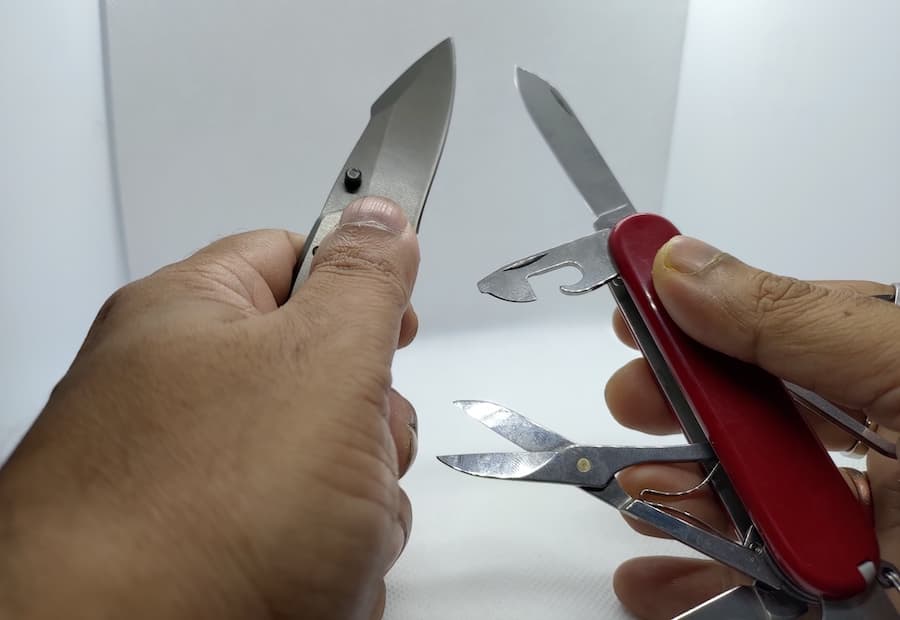
6. Self Defence
Which is a better self-defense weapon?
A pocket knife can be used as a weapon if required. This is especially important in the outdoors or in jungles if you find yourself only with your pocket knife to defend yourself. You can probably use your multi-tool too for the same purpose, it is just not effective as a pocket knife.
In most cases, the knife is the biggest tool in a multi-tool and you will probably be using it as your weapon.
However, a multi-tool being heavier and not very ergonomic to have a firm grip on it, it will slow down your movement a bit and reduce the effectiveness of the tool as a weapon.
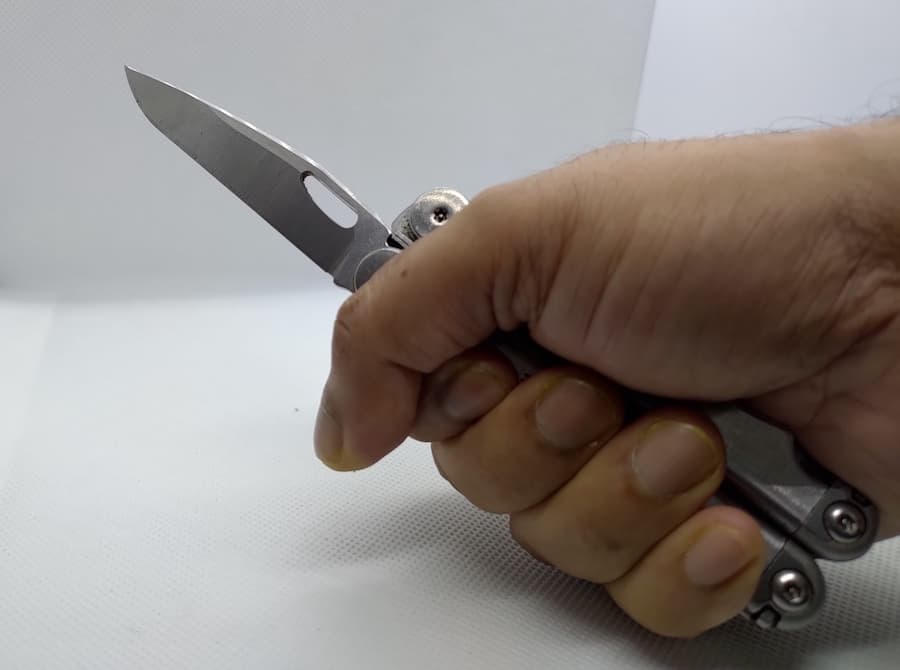
In addition to this, if the multi-tool does not have a one-handed opening feature or worse the blade does not lock, there is a serious probability that you will hurt yourself more than your attacker.
So is a multi-tool useless for self-defense? Of course not, you can probably do a lot of damage with your multi-tool knife and it is always better to have something than nothing. But a pocket knife is just far more effective as a self-defense weapon.
7. Durability
How long will the tool last?
A well-made pocket knife is just more durable than a well-made multi-tool. Don’t get me wrong, both knives and multi-tools can last for decades with proper care. In fact, you will probably find families where knives or multi-tools have been used for the entire lifetime and then passed over to the next generation as gifts or inheritance.
Knives are in general more durable than multi-tools because they are less complex and hence easier to maintain. Multi-tools usually have a lot of complex engineering inside them, a lot of parts that should all work in conjunction with one another to make it work. Failure of one or more parts can make certain tools of a multi-tool totally unusable.
In fact, if some of the tools of a multi-tool does not work or get damaged, it is not very easy to take those useless tools out of it and keep using the other ones. You will lose interest in it as it starts feeling like dead weight.
It is much easier to fix a damaged knife than a damaged multi-tool. For a knife, you can probably do it yourself, but for a multi-tool, you will need professional help in most cases.
8. Ease Of Sharpening
A blunt knife is more dangerous than a sharp one!
Sharpening a knife is something that cannot be ignored, especially if you plan to use it for years and decades without losing its effectiveness. In fact, it is better to not carry a knife at all, rather than carry a dull knife.
The good thing is, it does not take much time or effort to sharpen a knife if you know how to do it and have the right tools to do it. However, you may find a multi-tool a bit difficult to sharpen compared to a pocket knife.
This is because a multi-tool has a lot many tools in it, not just a blade. Even for the blade, without the right sharpening tool, you might find it a bit cumbersome to sharpen it in the traditional way just because the whole tool is much thicker than a normal knife and difficult to hold in certain angles. It will take more effort and time to sharpen it than a normal pocket knife.
Read this article to know all about sharpening multi-tool knives.
9. Plain Edge or Serrated Edge
Which one do you prefer?
Some people love serrated knives, some hate it.
But you cannot ignore that certain things can be done much better with a serrated knife than a plain edge knife.

Think about slicing through something with a hard exterior, like bread or a tomato. It also is very effective when cutting thick cloth, like canvas, or hard cardboard.
You may love to have a serrated knife with you, but it is just not possible with a pocket knife. The best you can have is something which is half serrated and half plain edge.
While it may look like the best of both worlds, but in reality, it is not very practical as neither the plain edge nor the serrated edge has sufficient length to use it effectively.
However, a multi-tool just eliminates this problem by having a separate serrated knife in addition to a plain edge knife.
Of course, all multi-tools may not have both, but there are some models that have this option.
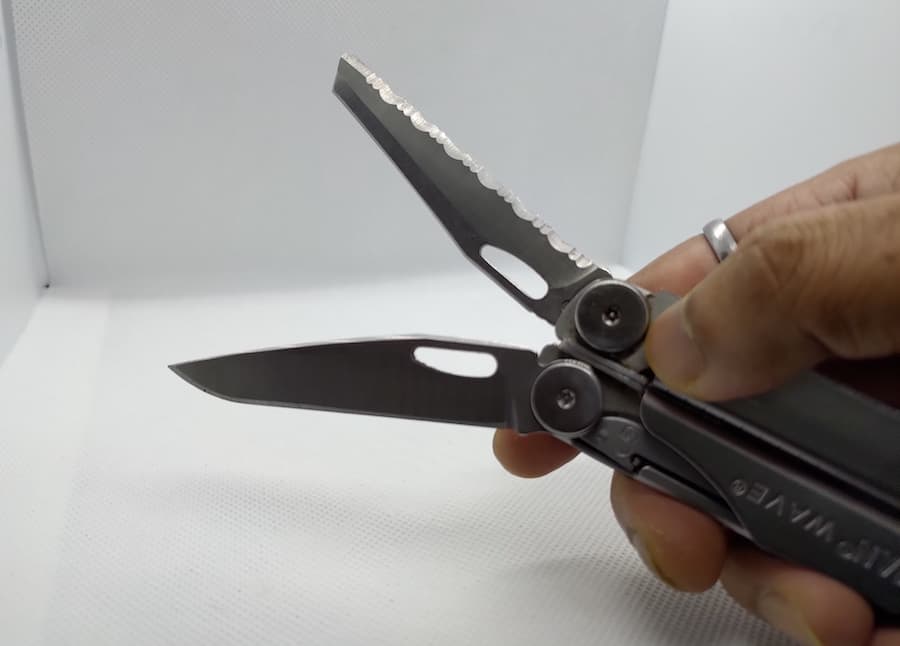
In addition to this, some multi-tools also pack a wood saw, something which can be used almost as effectively as a serrated knife.
10. Does it go well with your attire, dress, or outfit?
Carry your tool with style!
The way you dress defines what kind of tool you can carry with you. So think about how you like to dress usually, or in situations where you would like to carry a pocket knife with you.
So if you are wearing dress pants, a small lightweight pocket knife would probably be the most appropriate thing. You might not have enough room in your pockets to fit anything else, especially something bulky like a multi-tool.
However, if you are wearing cargo shorts with lots of pockets, or do not mind wearing a sheath in your belt, you can definitely carry a multi-tool with you. A multi-tool with a clip also sits very well in a jeans pocket.
11. People’s Perception
What do people around you think about your pocket tool?
Depending on where you use it, the perception of the people around you regarding the knife or multi-tool you carry is very important. Some people may freak out when they see a knife in your hand. It is almost always perceived as a weapon. This can sometimes create very unpleasant situations, especially in a gathering or a crowd.
However, I have seen that multi-tools are usually a little more acceptable. Since it has a lot of other tools in addition to the knife, the reactions from the people are less extreme. The ‘other’ tools in the multi-tool make it look like a tool rather than a weapon.
You may think that for all practical purposes a multi-tool with a knife is as much a weapon as a pocket knife of similar size, but usually, people don’t perceive it that way. A knife in your hands while camping or hiking may seem very normal, but it may appear a bit scary in your hand when you are in the office, or in party or family gathering. It looks more like a weapon than a tool to some people, no matter how you intend to use it.
One trick which may come in handy in these situations is to choose a colorful pocket knife, like orange, yellow, white, or even girly colors like pink. These kind colors in pocket knives look less threatening to some people as compared to something like black, or army colors like olive green.
12. Airport Security
Can you carry your pocket tool with you during air travel?
Knives are not allowed through airport security, period. Some airports do have guidelines that may allow pocket knives within a certain length to be carried into the flight cabin, but in most cases, these rules are overridden by the security personnel and any type of knife is confiscated.
The situation is almost the same for multi-tools too. But there are some TSA approved multi-tools which sometimes are allowed to be carried along with you. Most of these multi-tools do not have any knife in them.
Read this article if you want to know what you can or cannot carry during air travel, as far as multi-tools are concerned.
13. Price
Can you afford it?
The price may be an important factor while deciding between a knife or a multi-tool. Multi-tools are complex works of engineering and are costly to manufacture. As such they are costlier then pocket knives. Of course, there are some very expensive pocket knives available in the market too, but a high-quality multi-tool is almost always more expensive than a high-quality pocket knife.
A cost-benefit ratio analysis is the right thing to do when making the final decision. Are the extra tools in a multi-tool worth the extra money that you will have to pay? If your requirement and usage pattern demands a multi-tool, then go for it. Otherwise, stick with a pocket knife and save the extra cash.
Final Thoughts
By now you must have got a fair idea of whether to go for a multi-tool instead of a pocket knife. I usually carry a small keychain SAK with me and have another medium SAK in my daily bag. My bigger multi-tools usually stay at home, unless I go hiking or camping, or in someplace where I know I might find them useful. Your situation may be completely different than mine.
If you are not sure, you can always get both a pocket knife and a multi-tool, and carry them with you for a few days or months.
Eventually, you will realise which one you need most often based on your usage pattern.

You can then carry that one with you, and keep the other one in your bag or your car as a backup. Later, you will have the option to switch between the two if your usage pattern changes with time.
